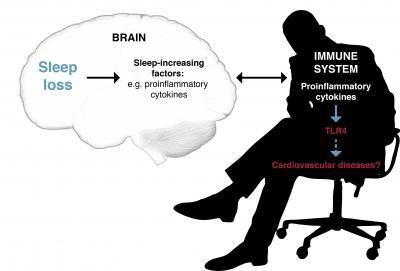This article comes from a Special Issue of
Behavioral Sciences:
Analytical Psychology: Theory and Practice. This is the first article I have seen that examines the efficacy of Jungian psychodynamic psychotherapy, which Jung had named
Analytical Psychotherapy.
Just for clarification, these are some of the characteristics of Psychodynamic therapy models, which can be quite diverse, although all of them believe to some extent in early attachment issues as a foundation for later mental health issues. To be clear, I disagree with some of the items in the list below, which comes from
Wikipedia:
Although psychodynamic psychotherapy can take many forms, commonalities include:[3]
- An emphasis on the centrality of intrapsychic and unconscious conflicts, and their relation to development. [The conflict model has fallen out of favor since Kohut developed his Self Psychology model in the 1970s, which looks more toward the interpersonal or relational dysfunctions as the source of psychological issues.]
- Seeing defenses as developing in internal psychic structures in order to avoid unpleasant consequences of conflict. [Defense mechanisms are now seen more as coping strategies to navigate psychologically painful traumas.]
- A belief that psychopathology develops especially from early childhood experiences.
- A view that internal representations of experiences are organized around interpersonal relations.
- A conviction that life issues and dynamics will re-emerge in the context of the client-therapist relationship as transference and counter-transference.
- Use of free association as a major method for exploration of internal conflicts and problems. [This is more a part of the psychoanalytic tradition.]
- Focusing on interpretations of transference, defense mechanisms, and current symptoms and the working through of these present problems.
- Trust in insight as critically important for success in therapy.
Typically when one sees the term "empirically-based therapy" or "evidence-based practice," what is being referred to is some form of cognitive therapy, often Cognitive Behavioral Therapy (CBT) or Dialectical Behavioral Therapy (DBT). However, as Jonathan Shedler demonstrated in his 2010 article,
The Efficacy of Psychodynamic Therapy, psychodynamic therapies are as effective as CBT in the short term and more effective than CBT in the long-term.
Here is the abstract to the Shedler article, originally published in
Scientific American Mind:
Empirical evidence supports the efficacy of psychodynamic therapy. Effect sizes for psychodynamic therapy are as large as those reported for other therapies that have been actively promoted as “empirically supported” and “evidence based.” In addition, patients who receive psychodynamic therapy maintain therapeutic gains and appear to continue to improve after treatment ends. Finally, nonpsychodynamic therapies may be effective in part because the more skilled practitioners utilize techniques that have long been central to psychodynamic theory and practice. The perception that psychodynamic approaches lack empirical support does not accord with available scientific evidence and may reflect selective dissemination of research findings.
Si it's good to see another model of psychodynamic therapy has proven itself to be "evidence-based" and beneficial for clients.
Full Citation:
Roesler, C. (2013, Oct 24). Evidence for the Effectiveness of Jungian Psychotherapy: A Review of Empirical Studies. Behavioral Sciences; 3(4): 562-575. doi:10.3390/bs3040562
Christian Roesler 1,2
1. Clinical Psychology, Catholic University of Applied Sciences, Karlsstraße 63, 79104 Freiburg, Germany
2. Faculty of Psychology, University Basel, Switzerland
Abstract
Since the 1990s several research projects and empirical studies (process and outcome) on Jungian Psychotherapy have been conducted mainly in Germany and Switzerland. Prospective, naturalistic outcome studies and retrospective studies using standardized instruments and health insurance data as well as several qualitative studies of aspects of the psychotherapeutic process will be summarized. The studies are diligently designed and the results are well applicable to the conditions of outpatient practice. All the studies show significant improvements not only on the level of symptoms and interpersonal problems, but also on the level of personality structure and in every day life conduct. These improvements remain stable after completion of therapy over a period of up to six years. Several studies show further improvements after the end of therapy, an effect which psychoanalysis has always claimed. Health insurance data show that, after Jungian therapy, patients reduce health care utilization to a level even below the average of the total population. Results of several studies show that Jungian treatment moves patients from a level of severe symptoms to a level where one can speak of psychological health. These significant changes are reached by Jungian therapy with an average of 90 sessions, which makes Jungian psychotherapy an effective and cost-effective method. Process studies support Jungian theories on psychodynamics and elements of change in the therapeutic process. So finally, Jungian psychotherapy has reached the point where it can be called an empirically proven, effective method.
 Download PDF Full-Text
Download PDF Full-Text [230 KB, uploaded 24 October 2013]















